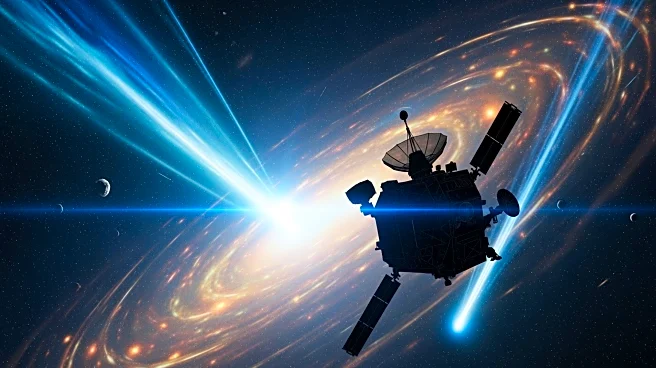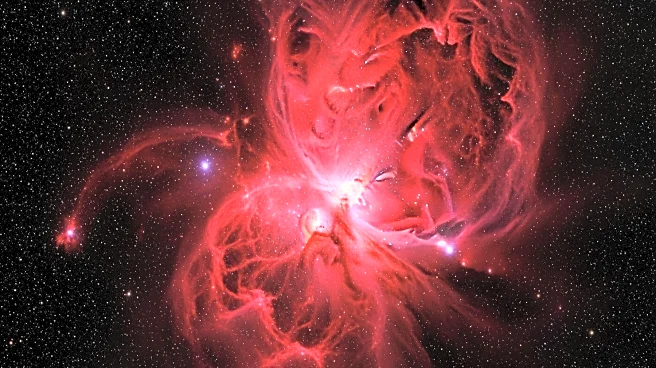What's Happening?
Researchers from the University of Tokyo have potentially detected evidence of dark matter using data from NASA's Fermi Gamma-ray Space Telescope. Dark matter, conceptualized nearly 100 years ago by Swiss astronomer Fritz Zwicky, is an invisible substance
theorized to hold galaxies together. It does not absorb, reflect, or emit light, making it difficult to observe directly. The research team, led by Professor Tomonori Totani, identified gamma-ray emissions from colliding WIMPs (Weakly Interacting Massive Particles) in a halo-like structure toward the center of the Milky Way galaxy. This discovery could mark the first time humanity has 'seen' dark matter, suggesting it is a new particle not included in the current standard model of particle physics.
Why It's Important?
The potential detection of dark matter is a significant breakthrough in both astronomy and physics. If confirmed, it would mean identifying WIMPs as the true nature of dark matter, solving one of the greatest mysteries in cosmology. This discovery could lead to the identification of a new elementary particle not in the Standard Model of particle physics, representing a major advancement in fundamental physics. The findings could reshape our understanding of the universe's composition and the forces that govern it, impacting future research and technological developments in astrophysics.
What's Next?
The results must be verified through independent analysis by other researchers, and further evidence is required to confirm the findings. The decisive factor will be the detection of gamma rays with the same spectrum from other regions, such as dwarf galaxies. The accumulation of additional data from the Fermi satellite and large ground-based gamma-ray telescopes like CTAO will be crucial. Continued research and collaboration among scientists worldwide will be necessary to validate these findings and explore their implications further.
Beyond the Headlines
The discovery of dark matter could have profound implications for our understanding of the universe and the laws of physics. It challenges existing theories and could lead to new models that better explain the behavior of galaxies and cosmic phenomena. The identification of a new particle could also open up new avenues for research in particle physics, potentially leading to technological advancements and innovations. This development highlights the importance of international collaboration and investment in scientific research to uncover the universe's mysteries.














